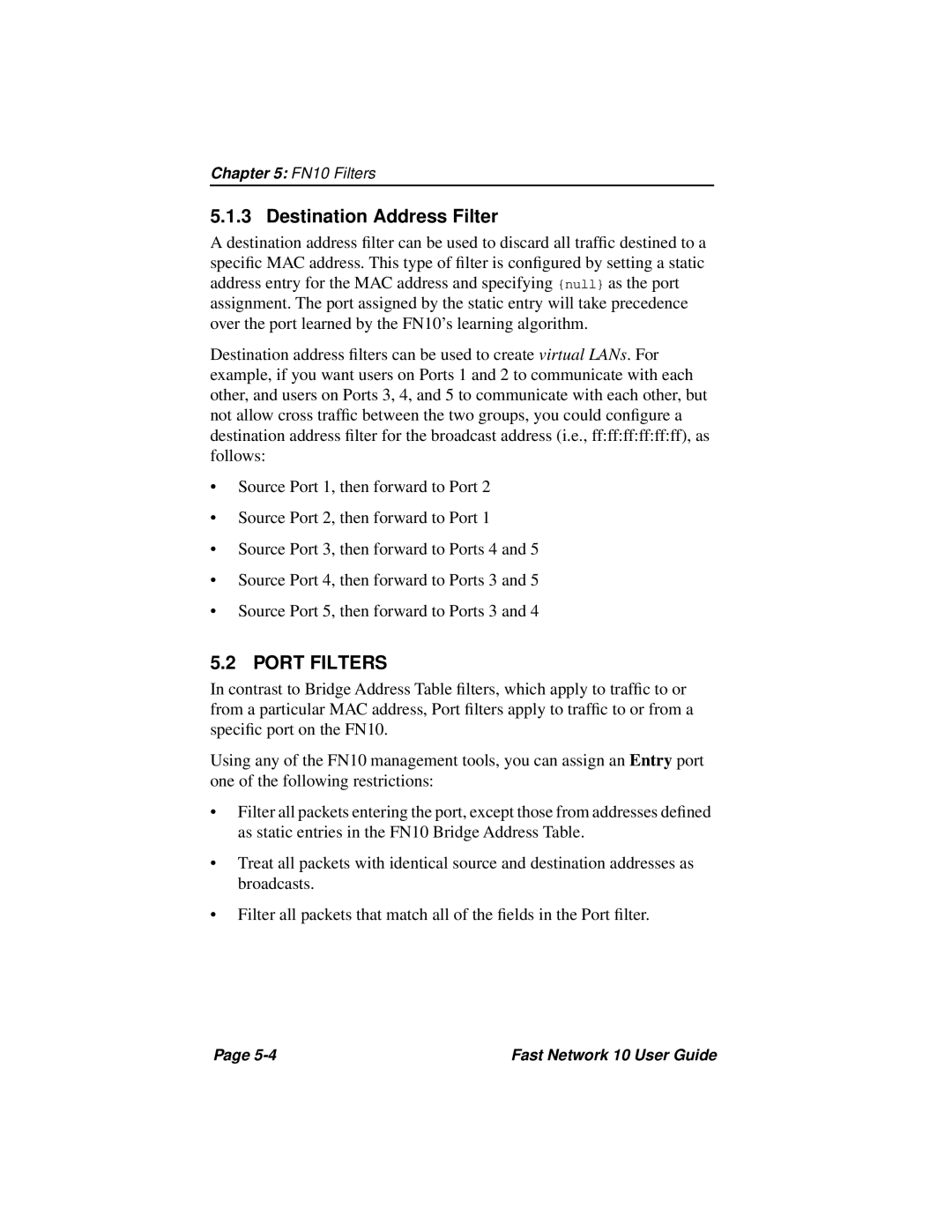Chapter 5: FN10 Filters
5.1.3 Destination Address Filter
A destination address filter can be used to discard all traffic destined to a specific MAC address. This type of filter is configured by setting a static address entry for the MAC address and specifying {null} as the port assignment. The port assigned by the static entry will take precedence over the port learned by the FN10’s learning algorithm.
Destination address filters can be used to create virtual LANs. For example, if you want users on Ports 1 and 2 to communicate with each other, and users on Ports 3, 4, and 5 to communicate with each other, but not allow cross traffic between the two groups, you could configure a destination address filter for the broadcast address (i.e., ff:ff:ff:ff:ff:ff), as follows:
•Source Port 1, then forward to Port 2
•Source Port 2, then forward to Port 1
•Source Port 3, then forward to Ports 4 and 5
•Source Port 4, then forward to Ports 3 and 5
•Source Port 5, then forward to Ports 3 and 4
5.2 PORT FILTERS
In contrast to Bridge Address Table filters, which apply to traffic to or from a particular MAC address, Port filters apply to traffic to or from a specific port on the FN10.
Using any of the FN10 management tools, you can assign an Entry port one of the following restrictions:
•Filter all packets entering the port, except those from addresses defined as static entries in the FN10 Bridge Address Table.
•Treat all packets with identical source and destination addresses as broadcasts.
•Filter all packets that match all of the fields in the Port filter.
Page | Fast Network 10 User Guide |
